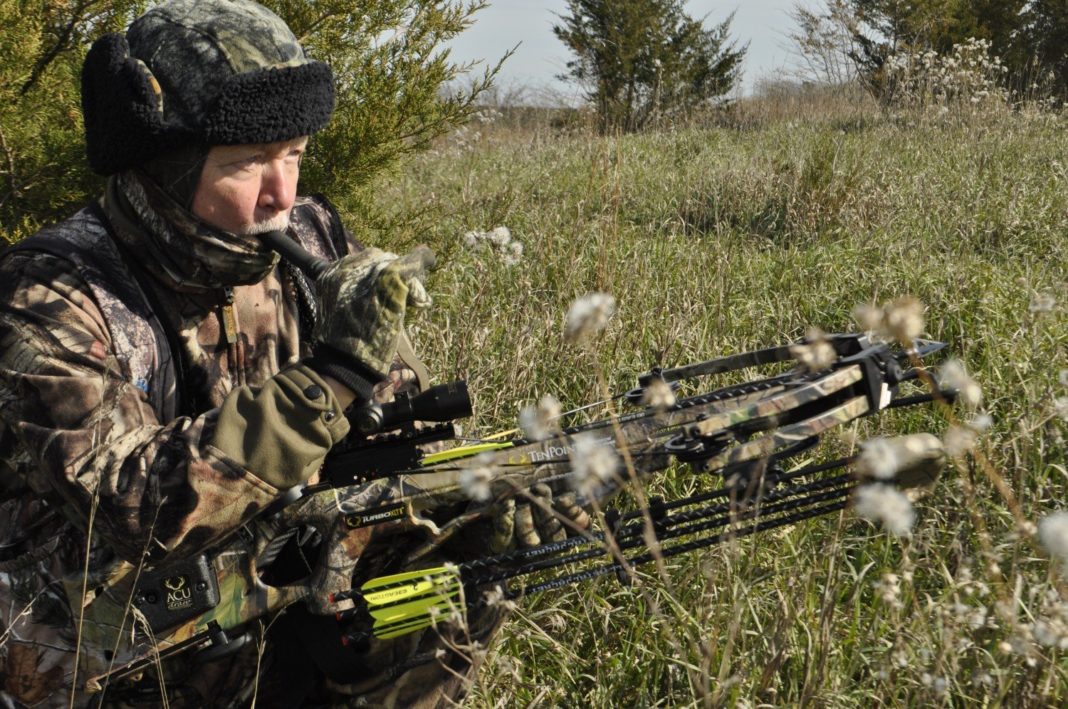Crossbow scopes can make a tremendous difference in accuracy and hunting success. Scopes in general give a shooter an advantage whether on a rifle or crossbow, the latter more complicated due to the trajectory of the arrow. Scopes often come as part of a “package” in which the shooter receives the crossbow, arrows, quiver, and a scope and scope quality varies greatly with price. Basic crossbows, (under $300) usually come with a scope with a set of reticle lines which can easily become confused in low light or times of great excitement. Also, inexpensive scopes may be susceptible to fog, rain, or extra vibration when carried on a quad over rough terrain. Unfortunately, there’s no way to tell the durability of a scope until you use it and that can be too late. For that reason, many shooters opt for aftermarket scopes which is the meat of this post. Aaron Carter looks at

the difference between optics with multiple reticles and red-dot scopes. My experience with single-dot scopes has gone both ways. Last year two friends and I took a plains game safari in South Africa and bagged 15 animals with 15 arrows, perfect success, and each of us used a red dot scope. Key to this success was the nature of the hunt where each hunter waited in ambush by a waterhole and kept shots between 15 and 25 yards. Personally, I shot an Nyala at a 45 degree downward angle at a range of 10 yards. We had practiced extensively at close and longer range and knew that the arrows would be on target if we kept our mental cool and maintained proper shooting form, like not jerking the trigger. On the opposite end, I used a red dot on an elk hunt where the bow was sighted for 30 yards which kept me in the kill zone between 20 and 40 yards. As luck would have it, I got a longer range shot and missed. Today’s crossbows are so accurate, they usually will bust arrows from a bench rest at 20 yards and the scope you use can extend this incredible accuracy into hunting situations.
The crossbow market differs from others in that all-inclusive “packages” dominate, and for good reason, too. Rather than having to piecemeal his or her way to a range- and field-capable crossbow, the bundler gets all of the items necessary for practice and hunting (except broadheads) with one buy. Included among the many articles is generally found some sort of optic for sighting; except for some bowfishing-specific and low-cost models, seldom are modern crossbows equipped with open sights. But, what if you’re displeased with the pre-packaged optic, the crossbow didn’t come with one, or it no longer works (for one of myriad reasons)? Below is a primer for purchasing a new, improved, or first crossbow optic.



















![The Best Deer Camp Chili [VIDEO] Deer Chili Ingredients, Tomatoes, Chili Spices](/wp-content/uploads/2015/10/Deer-Chili-Deer-Camp-Recipe-218x150.jpg)
![How to Call Elk Early in the Season [VIDEO]](/wp-content/uploads/2016/08/byers003-218x150.jpg)




![Idiots Disturb Hunter: How Would You Have Handled It? [VIDEO]](/wp-content/uploads/2015/10/DSC00110-e1474487693878-100x70.jpg)
![Albino Buck Shocked to Shed His Antlers [VIDEO]](/wp-content/uploads/2015/10/AlbinoDeer-100x70.jpg)